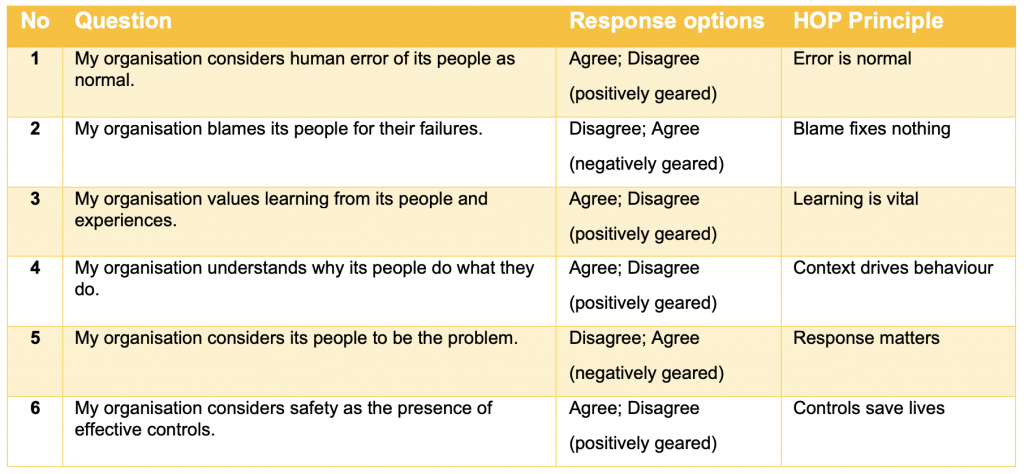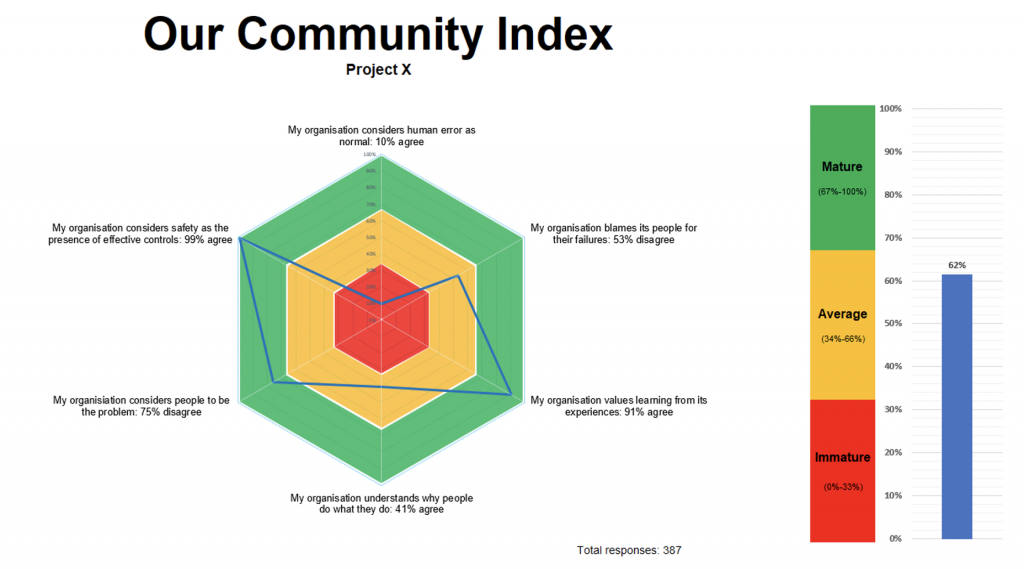Our Community index
The ‘Our Community Index’ (OCI) is a tool to collect the views of people in an organisation in respect to six statements linked to the principles of Human and Organisational Performance. The findings inform the SRI, but the OCI can also be calculated and viewed separately without calculating the SRI. This makes the OCI a powerful tool to understand safety and resilience at a point in time or as a trend within an organisation, project, or a group of staff. The benefits of the OCI are that it can be calculated quickly and that it offers immediate insight into people’s thoughts about the key aspects of safety and resilience.
OCI Survey Questions
The OCI consists of six (6) survey questions. Two questions are negatively geared to prevent response bias.

Question 1 identifies whether people in the organisation consider human error as normal; Question 2 indicates whether people feel the organisation blames its staff and/or contractors for the mistakes; Question 3 identifies whether respondents believe that their organisation understands why people do what they do; Question 4 identifies whether an organisation values learning to continuously improve; Question 5 questions if people think that their organisation considers its people to be the problem to control or a valuable resource and solution to harness; Question 6 identifies whether people in the organisation consider safety to be the presence of effective controls.
OCI Example Results
The OCI results are depicted in the form of a hexagon graph. The inner red circle represents an immature OCI (0-33%); the amber circle an average OCI (34-66%); and the green circle a mature OCI (67-100%). The OCI is calculated as the average of the six (6) percentage scores (blue bar on the right side of the graph).

The above example OCI uses mock data to illustrate the concept. 387 have completed the OCI survey, which has resulted in an OCI of 62%, representing an average OCI. The participants indicate that the organisation has a strong focus on learning (91%), values controls (99%), and considers people to be a solution (75%). However, people feel that the organisation does not necessarily understand the context why people do what they do (41%). The majority of respondents feel blamed if they make mistakes (53%). Human error is hardly considered normal (10%). This raises questions, such as whether staff and contractors are willing to report safety-critical information to supervisors; if the organisation is successfully managing human factors; or whether controls are in place to allow people to fail safely.